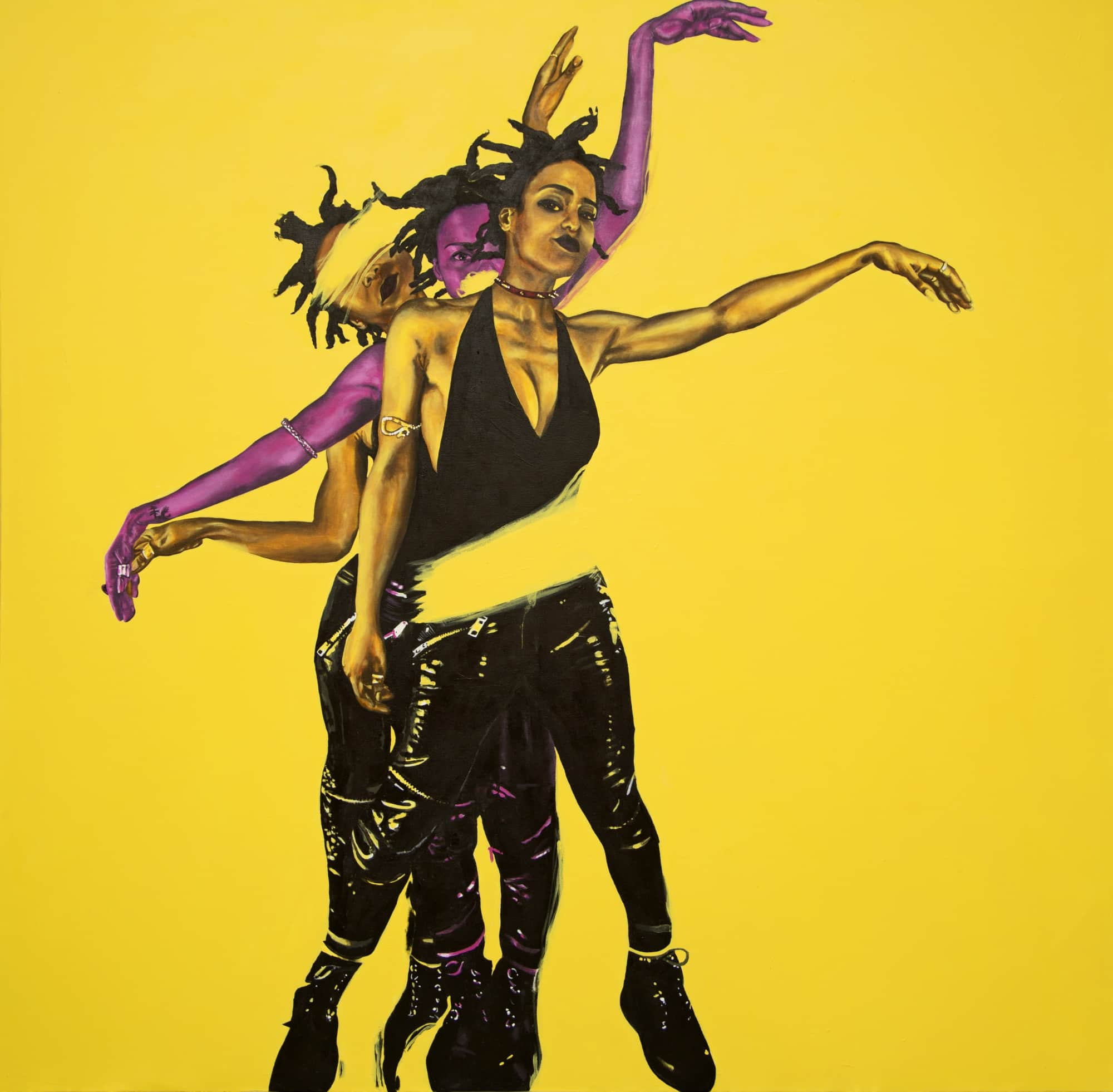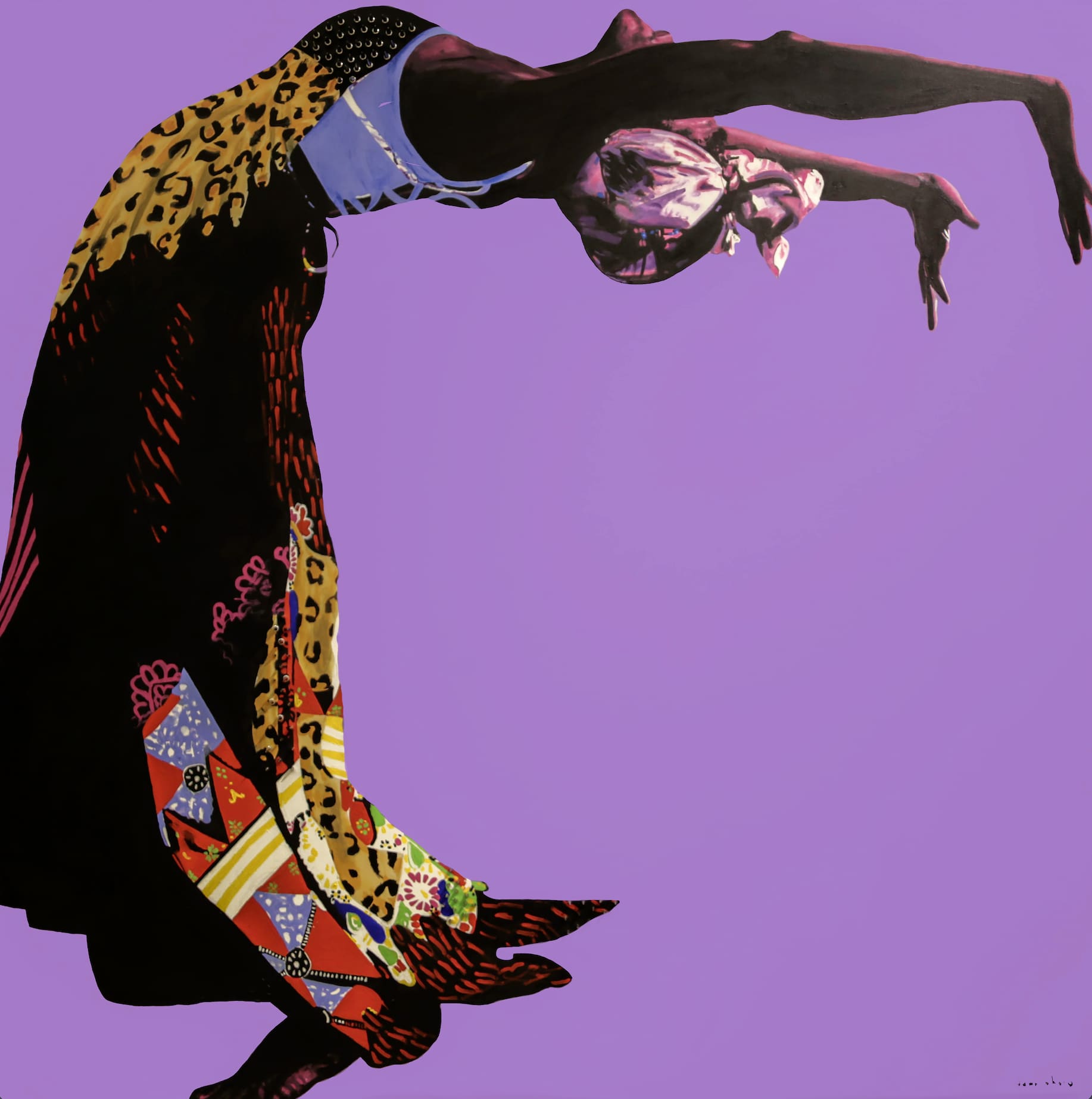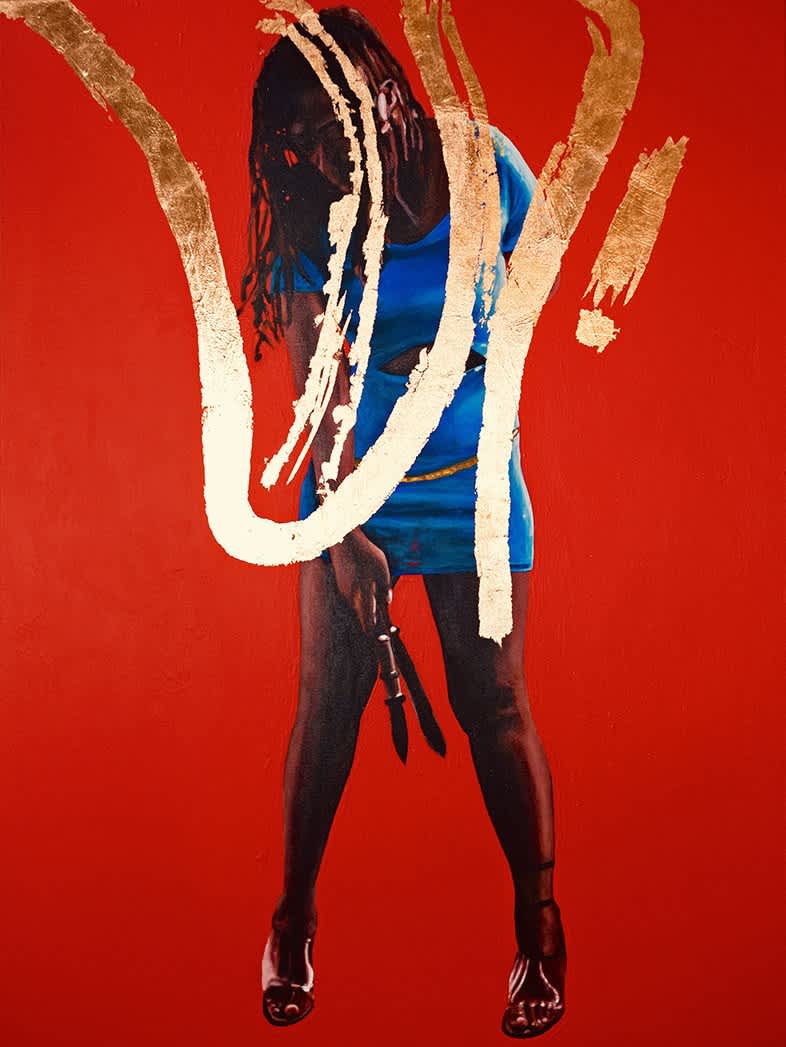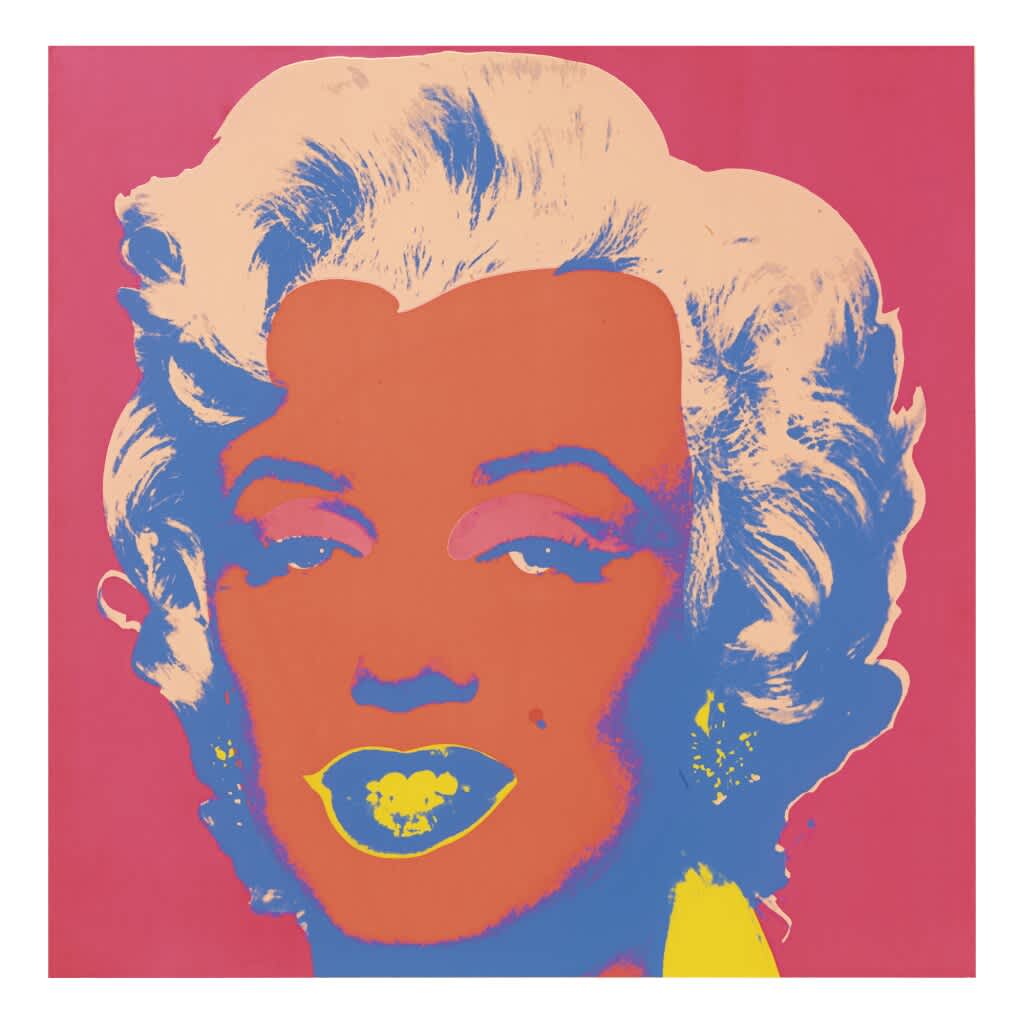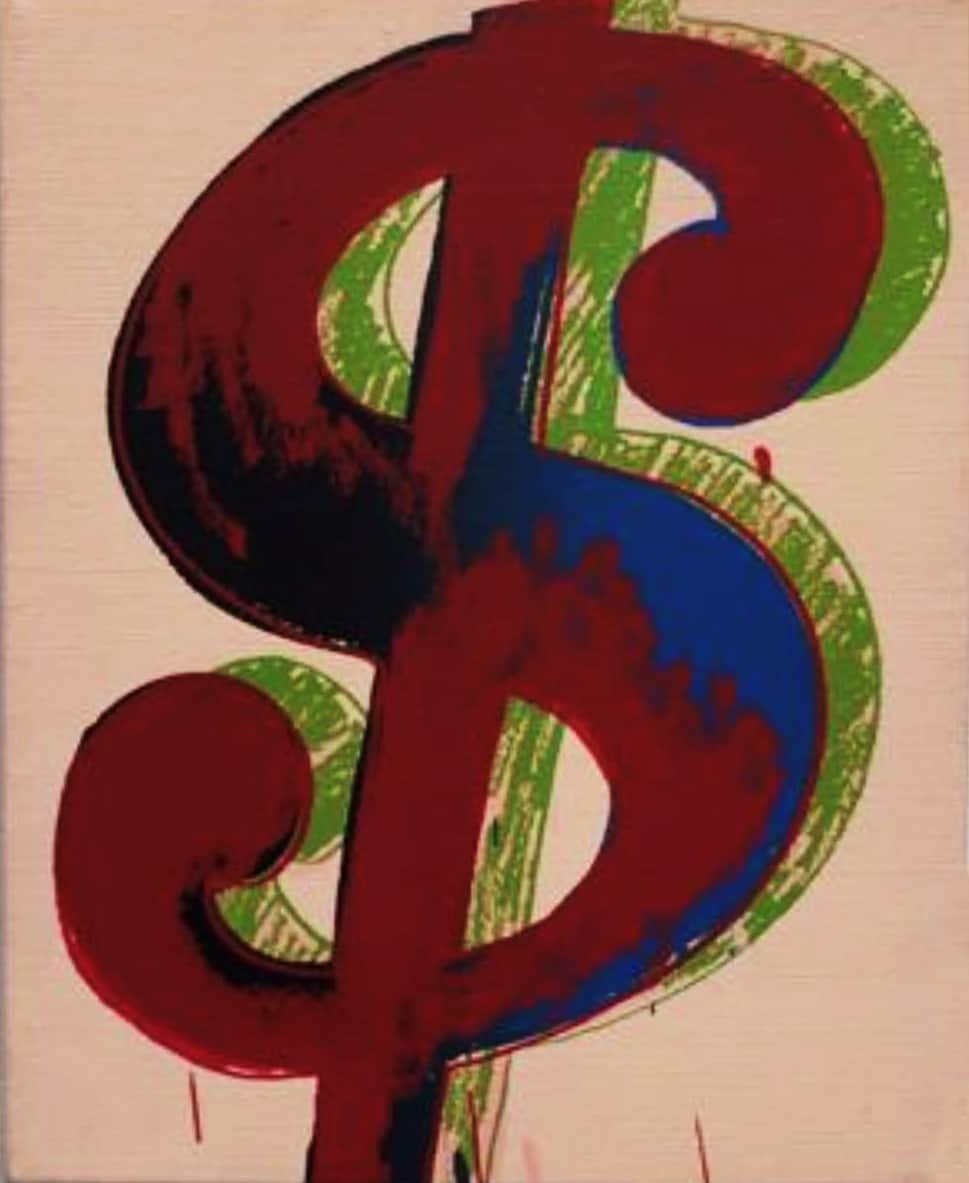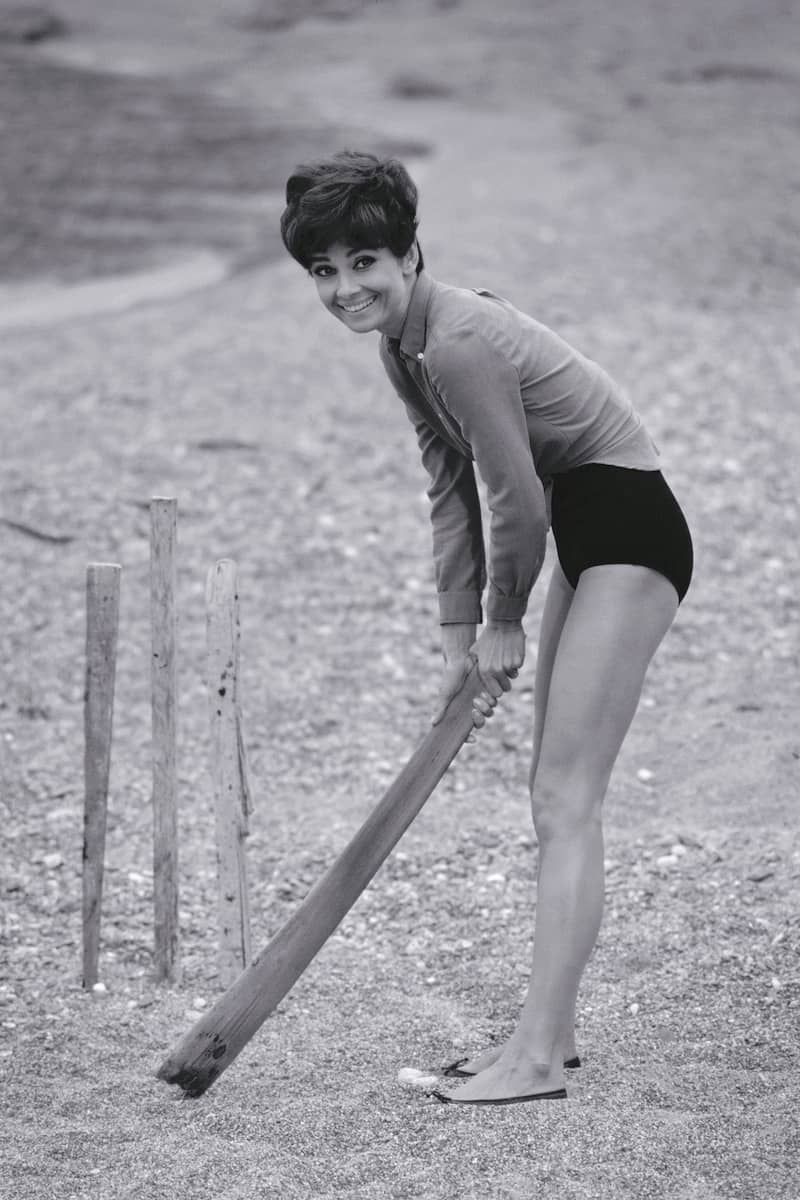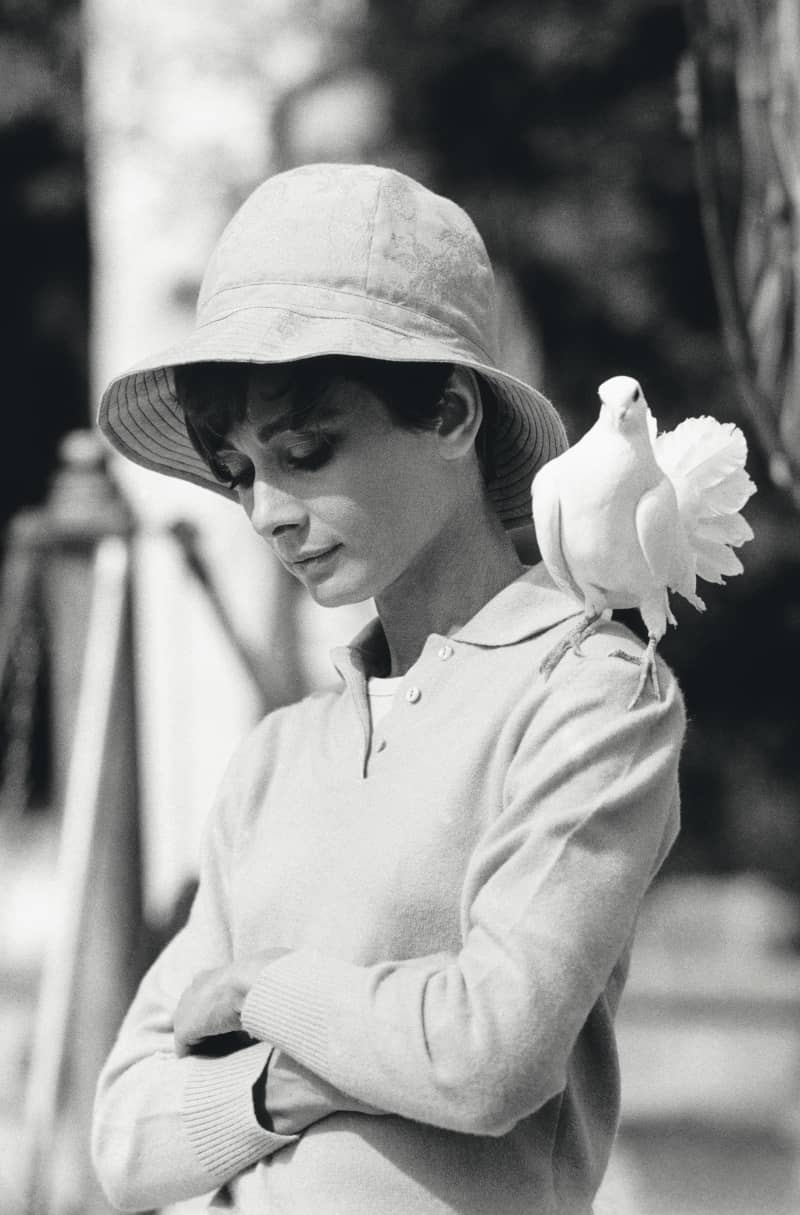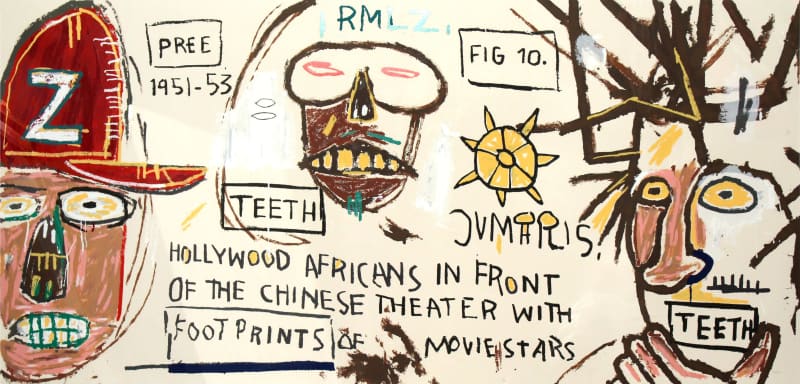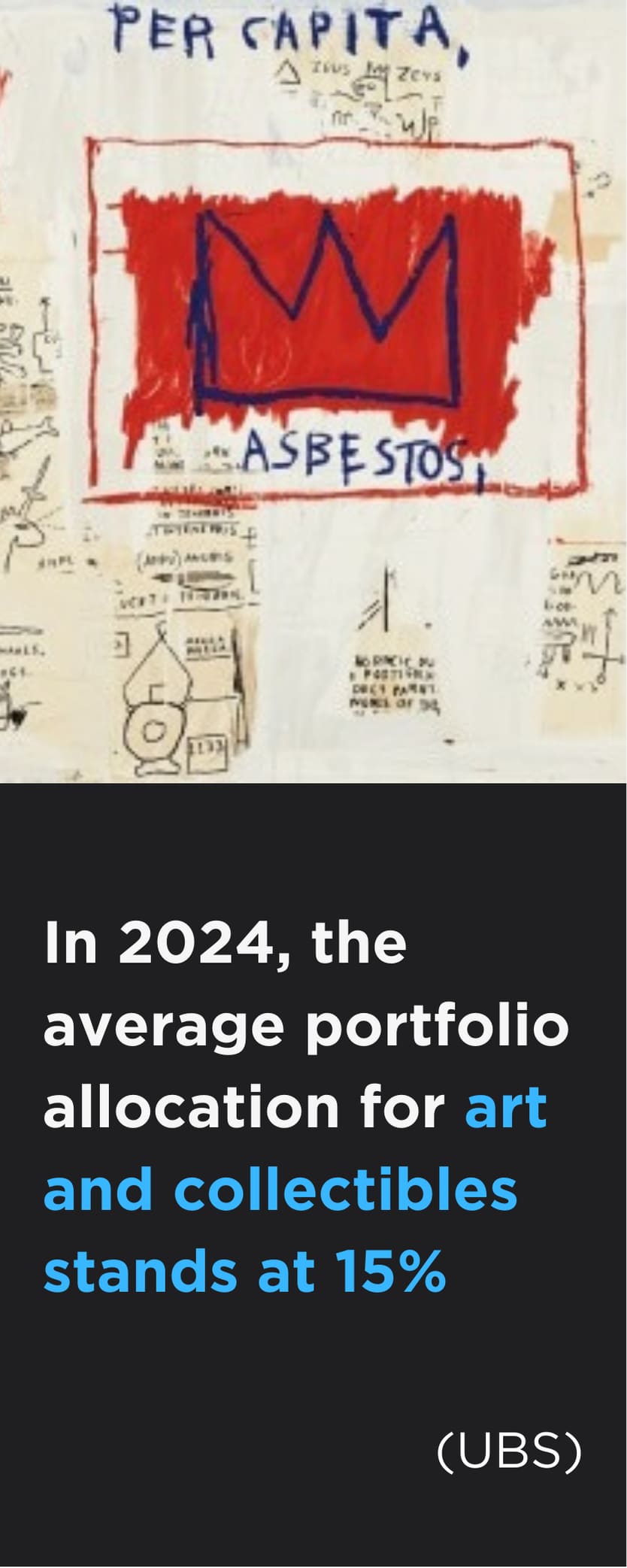From contemporary artists with upcoming exhibitions to blue-chip masters whose influential legacies continue to inspire, we highlight three artists this month that are making waves in the art world and beyond.
Dawn Okoro
Known for her aesthetic expression, Dawn Okoro is a contemporary conceptual artist whose work takes inspiration from rebellious punk culture. Inspired by music, fashion and design, Okoro creates dynamic portraits of an array of creative individuals including Black musicians, dancers and actors, all of whom use their creativity to resist societal expectations. Championing self-expression and self-reflexivity, the artist uses space, movement, pattern and texture in her paintings to convey the individuality of each of her subjects. Suspending the sitters of her portraits in block-coloured space, the personality and character of each subject shines through. The artist then partially obscures her figures with gestural strokes of gold leaf to reflect her own experience of erasure and hyper-visibility.
DAWN OKORO, THE THREE GRACES, 2018
Dawn Okoro was raised in Lubbock, Texas by her mother and step-father. She notes that throughout her upbringing she was ‘fully immersed in American culture’, yet her Nigerian heritage remains a core element of her identity. This tension between her birthplace and her heritage continues to inform much of her work. Growing up in a small town, Okoro found herself drawn to the boundless creativity and self-expression that fashion allowed. Fashion design and photography swiftly became a central part of her childhood and still informs her work to this day.
Opening on 24th February, Maddox Gallery will proudly host Okoro’s first UK solo exhibition, entitled Mad, Explosive, Spontaneity. The title of the exhibition is inspired by a song entitled Spontaneity by MC and trailblazer for women in music, Bahamadia who creates music that blends jazz, hip-hop and rap. Using wordplay, allusions, and jazz samples to make her point, the song alludes to the lyricist’s ability to succeed in an industry that marginalizes the contribution of women. This is a sentiment that is echoed in Okoro’s outstanding oeuvre.
Andy Warhol
An innovator like no other, Andy Warhol was a prolific creative, with his talents spanning many fields including art, filmmaking and photography. Known as the King of Pop, the artist is famed for popularising the genre of pop art during the 1960s. Drawing inspiration from sources in commercial and popular culture, pop art focused upon the mass produced and the banal. Warhol is best known for his silkscreen printing process, which allowed him to produce his legendary variations of well-known faces and products in vibrant palettes.
ANDY WARHOL, MARILYN (F. & S. II.22), 1967
This month, the Young Vic theatre are celebrating the legacy of this iconic artist, focusing upon his intimate friendship with renowned street artist Jean-Michel Basquiat. Staged by the Young Vic’s artistic director, Kwame Kwei-Armah, The Collaboration is the world premiere of Anthony McCarten’s drama that imagines the two artists’ New York workshop together. Celebrated British actor Paul Bettany, known for his roles in the Marvel movies, will play the legendary pop artist and Broadway star Jeremy Pope will play the young graffiti artist, reimagining the dynamic duo who changed contemporary art forever.
ANDY WARHOL, DOLLAR SIGN, 1982
Furthermore, with February marking LGBTQ+ History Month in the UK, it seems right to celebrate Andy Warhol also as a gay icon. From his sensual male nude sketches to his Ladies and Gentlemen series featuring drag queens, the artist openly expressed his queer identity both in his art and beyond. ‘The Factory’, Warhol’s infamous studio, became a safe haven for those who were marginalised and repressed due to their race, gender and sexuality. As the artist himself put it, “Of course, people said the Factory was degenerate just because “anything went” there, but I think that was really a very good thing. As one straight kid said to me, “It’s nice not to be trapped into something, even if that’s what you are””. With LGBTQ+ History Month aiming to shed new light on the history and achievements of people within the community, Warhol remains firmly on our radar this month.
ANDY WARHOL, REAGAN BUDGET DEFICIT (NEGATIVE), 1985-86
Terry O’Neill
One of the world’s most collected photographers, Terry O’Neill is known for capturing the swinging sixties, photographing politicians to pop stars. Throughout his career, he immersed himself in the world of celebrities and fashion icons, with the artist becoming known for his photographs of musicians in unstaged settings. O'Neill managed to show a different side to the public persona of many of the music scene's greatest stars, including The Beatles, Elton John and David Bowie. Despite the photographer passing away in November 2019, his legacy continues to thrive.
TERRY O’NEILL, ELTON JOHN, 1970s
Born in East London in 1938, O’Neill originally wanted to become a jazz drummer and ended up becoming a photographer by chance. While pursing his music career, he looked for a job that might enable him to travel to New York to boost his chances of becoming a percussionist. He applied to work at British Overseas Airways Corporation – a company that would later become British Airways - and with no jobs on offer as an air steward, O’Neill joined the photography department instead. It was here that O’Neill caught his big break capturing, by chance, the prominent British politician Rab Butler asleep at the terminal. From this photograph, O’Neill secured employment at the Daily Sketch and never looked back. O’Neill would continue to publish his photographs in some of the UK’s best publications, boosting both his career and the profile of fine art photography.
TERRY O’NEILL, BRIGITTE BARDOT, SPAIN, 1971
It was just a few years later, on 4th February 1962, that The Sunday Times released its first issue of The Sunday Times Magazine, or as it was known then, the Colour Section. Although this may seem insignificant, this was the first colour supplement ever published by a UK newspaper, which marked an important milestone in the popularisation of fine art photography. This week, the publication is celebrating sixty years of the supplement and as a result are re-visiting some of the most ground-breaking photographic essays and boldest front covers in the history of the newspaper. One such cover is O’Neill’s Audrey Hepburn Plays Cricket, South of France, which adorned the front page of The Sunday Times Magazine on 4th September 1966. The photographer continued to grace the pages of the publication up until his death, with photographs such as his legendary image of Faye Dunaway at Beverly Hills Hotel and Elton John at Dodger Stadium featuring in the magazine. As we recount the vibrant history of British photography, this February we remember Terry O’Neill and his legacy.
TERRY O’NEILL, AUDREY HEPBURN PLAYS CRICKET, SOUTH OF FRANCE, 1966

